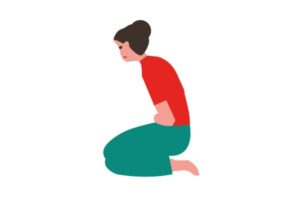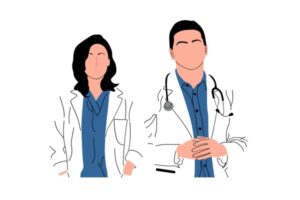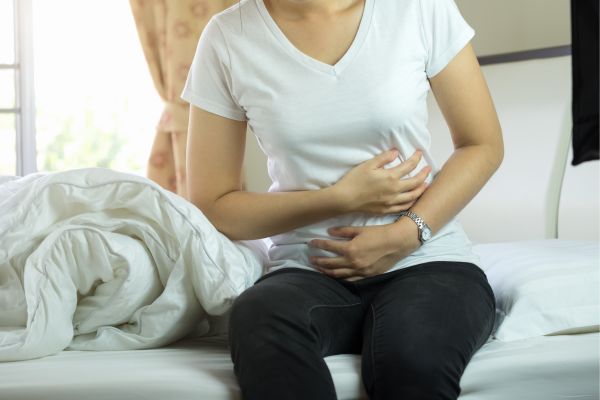Ovulation is a regular and frequently unremarkable aspect of the menstrual cycle for most women. However, some women experience ovulation pain, also known as mittelschmerz, which can range from mild discomfort to intense pelvic pain. While ovulation pain is generally considered a regular occurrence, there are occasions when it may indicate an underlying issue.
This article explores when ovulation pain may not be normal and when it is essential to seek medical attention.
Understanding Ovulation Pain
Ovulation is when an egg is released from the ovary and moves into the fallopian tube, making it available for fertilization. It typically occurs around the middle of the menstrual cycle, though the exact timing can vary among women. Ovulation pain, characterized by a sharp twinge or cramp on one side of the lower abdomen, is a common phenomenon experienced by many women. It is usually mild and short-lived, lasting a few hours to a few days.
Normal Ovulation Pain

Normal ovulation pain is generally characterized by its predictability and consistency. It typically occurs midway through the menstrual cycle and is often felt on one side of the lower abdomen. This pain is usually a result of the egg bursting through the ovarian follicle, causing brief discomfort or twinge. Normal ovulation pain is self-limiting and does not require medical intervention.
When Ovulation Pain May Indicate an Issue?
While ovulation pain is typically a natural part of the menstrual cycle, there are instances when it may indicate an underlying problem. Here are some scenarios when ovulation pain may not be normal:

1. Persistent or Severe Pain
If ovulation pain is intense, lasts for an extended period, or is accompanied by other concerning symptoms such as nausea, vomiting, or fever, it may indicate a more serious issue. Conditions like ovarian cysts, endometriosis, or pelvic inflammatory disease could be contributing to the heightened discomfort.
2. Pain on Both Sides
While ovulation pain typically occurs on one side of the lower abdomen due to the release of an egg from one ovary, experiencing pain on both sides may be a cause for concern. This could suggest issues such as polycystic ovary syndrome (PCOS) or irregularities in the reproductive system that require medical attention.
3. Irregular Menstrual Cycles
Women with irregular menstrual cycles may find it challenging to pinpoint ovulation. If ovulation pain occurs frequently, but the cycles are irregular or absent, it may be a sign of hormonal imbalances or other reproductive health issues that need investigation.
4. Painful Intercourse
If ovulation pain is accompanied by pain during intercourse, it could be indicative of conditions such as endometriosis or pelvic inflammatory disease. These conditions can affect fertility and require medical evaluation.
5. Difficulty Conceiving
Persistent ovulation pain coupled with difficulty conceiving may be a signal of an underlying fertility issue. Conditions like blocked fallopian tubes or hormonal imbalances may be hindering the conception process, and seeking medical advice is crucial for those trying to conceive.
When to Seek Medical Attention

Suppose a woman experiences ovulation pain that falls outside the realm of normalcy or is associated with any of the aforementioned red flags. In that case, it is essential to consult with a healthcare professional. A gynecologist or reproductive health specialist can conduct a thorough examination, perform necessary tests, and provide guidance on potential underlying issues.
Diagnostic tests may include pelvic ultrasound, blood tests to assess hormone levels, or laparoscopy for a direct view of the reproductive organs. These investigations can help identify conditions such as ovarian cysts, endometriosis, or hormonal imbalances that may be contributing to abnormal ovulation pain.
Conclusion
While ovulation pain is a common and typically benign part of the menstrual cycle, it is crucial to pay attention to the nuances and be aware of when it might signal an underlying issue. Persistent or severe pain, pain on both sides, irregular menstrual cycles, painful intercourse, and difficulty conceiving are all signs that warrant medical attention. By seeking help promptly, women can address potential reproductive health issues, receive appropriate treatment, and enhance their overall well-being. Regular gynecological check-ups and open communication with healthcare providers play a pivotal role in maintaining reproductive health and addressing concerns related to ovulation pain.
Disclaimer
The information provided in this article is intended for educational and informational purposes only and should not be considered a substitute for professional medical advice, diagnosis, or treatment. You must consult your physician or another qualified healthcare provider for any questions or concerns regarding a medical condition. Failing to seek professional medical advice or delaying treatment could result in severe consequences. The author and the website now disclaim any liability or responsibility for any adverse effects resulting directly or indirectly from the use of this information. Reliance on any information this article provides is solely at your own risk.





